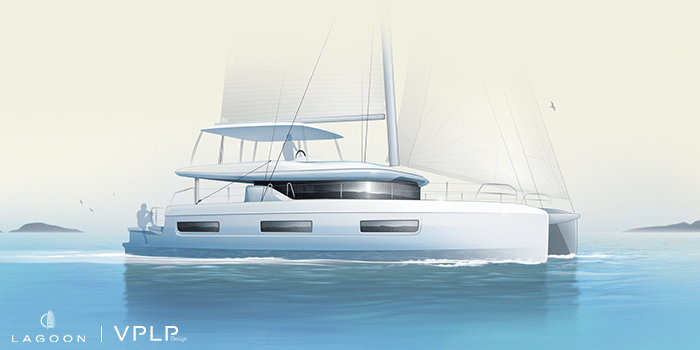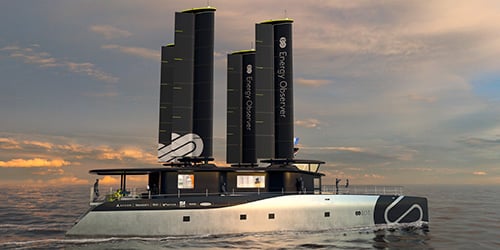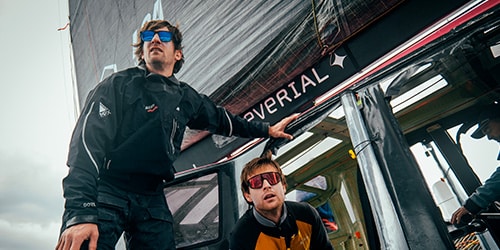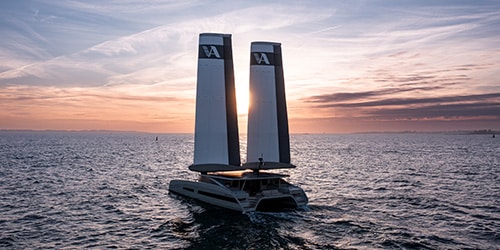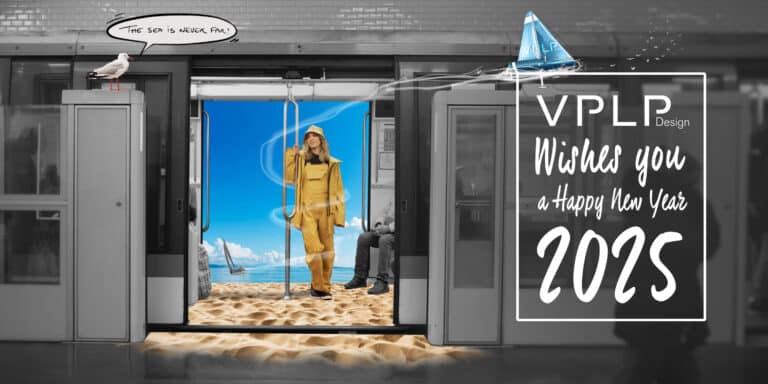The new Lagoon 43 and 60 have had their official launch at the latest Cannes Yachting Festival. They are the initial releases in the ongoing renewal of the brand’s catamaran range which celebrates its 40th anniversary this year. Two other models, the 38 and 82, will follow in 2025. In the meantime, Mathias Maurios, head of the Cruising Division at VPLP Design, talks us through the key features of these new models which continue to reinvent the pleasure of sailing.
Replacing a bestseller like the Lagoon 42, which produced more than a 1,000 units during its run, is as much an architectural challenge as a major economic factor because this size range lies at the heart of the international market for cruising catamarans. The design brief for this latest collaboration between VPLP Design and boatbuilder Lagoon – which began in 1984 with the 55 and has since produced 36 models – featured several avenues for development.
“The initial ambition was to increase significantly the porosity between the internal and external areas of the boat, a factor that determines as much the general architecture of the boat as the layout and the design of the furniture,” says Mathias Maurios. On the Lagoon 43, the breadth of the sliding glass doors was maximized so the saloon tables and cockpit tables can be used together or separately.
On the Lagoon 60, the saloon and the forward cockpit connect through a door which opens onto a luxurious seating area. The Lagoon 82 will feature the same layout, but the underlying logic will be pushed further thanks to the concave design of the superstructure which, like an inverted bay window, will maximize the available space between the superstructure and the bow net.
The second ambition for this new generation of Lagoons was to ensure a 360° view of the surrounding seascape, regardless of where the viewer is on the boat. On the Lagoon 43, the sides feature cut-outs on the quarters to facilitate access to the stern when alongside and, above all, to reduce the visual impact of the sides. On the 60, the stern cockpit has a flush deck throughout. No steps or edges disrupt the aesthetic, creating the atmosphere of a balcony overlooking the sea.
This layout was made possible on the largest models “by the thickness of the superstructure’s base, which was sufficient to accommodate it,” says architect Mathias Maurios. “Overall, the challenge for VPLP on these boats is to get rid of as much of the structure as possible, while preserving the boat’s structural coherence. We are particularly vigilant when it comes to maintaining our design standards, in particular by requiring stiffness criteria developed from our experience on certain key elements of catamaran bridging platforms.”

A real team effort

Each new Lagoon is managed by a head of project at VPLP’s offices in Paris. They supervise the build from design brief to launch. They have the support of a designer, who is intensely involved up until the digital machining of the moulds, and a dedicated structural engineer who undertakes the FEM calculations. “The ever-increasing use of digital modelling can’t be ignored, either,” says Mathias Maurios. “It didn’t exist as such a mere decade ago, and yet today it allows us to supply the builder with the pattern files ready for milling.”
From one generation to the next, the technical complexity of the Lagoons has required new tools and a specialization in each field. Today the architect-head of project is a veritable coordinator who draws on resources from each of VPLP’s divisions. “The one devoted to design has been especially expanded under Patrick le Quément’s initial impetus,” says the architect, “and he continues to cast a benevolent expert gaze over our work.”
Sometimes the ambitions of the design brief require additional competencies from the firm’s Racing Division based in Vannes. This was the case for, among others, the Lagoon 43 which benefited from CFD studies (digital flume tank) to validate the efficiency of the new hull lines, which have greater volume forward, above the waterline. This allows for beds as large as those in the stern to be installed in the four double cabins of equivalent size, a first on a 43’ cruising catamaran.
Easy handling remains a key variable to success. The search for the best compromise between pleasure under sail and ease of handling with a small crew is one of the challenges revisited on every Lagoon. In this connection, the future 38-footer, which will be previewed at the Lagoon Exclusive Days from March 12 to 15, 2025 at Lagoon’s Bordeaux shipyard, will feature the innovation of a rationalized helm station so no-one will be excluded from the pleasures of cruising under sail.
